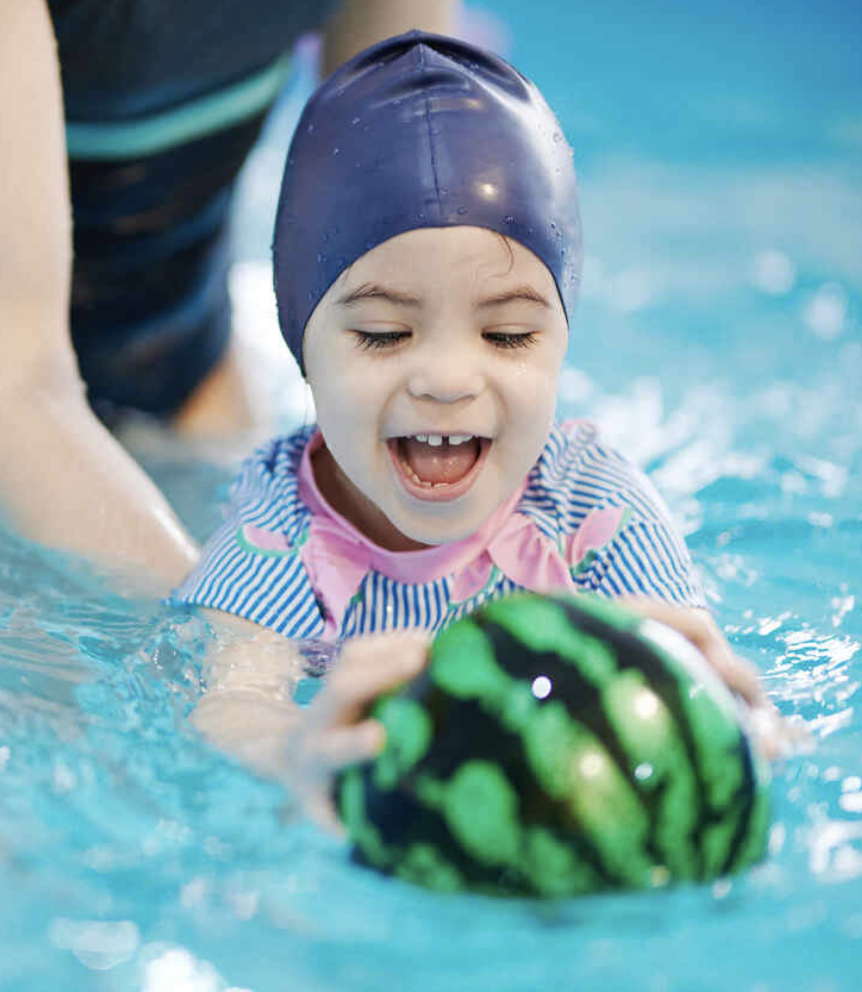Hydrotherapy, also known as aquatic physiotherapy, is a fun and effective way for kids with a range of health conditions […]

Hydrotherapy, also known as aquatic physiotherapy, is a fun and effective way for kids with a range of health conditions to develop their movement skills. It takes place in a warm pool and includes fun, guided exercises that help improve strength, flexibility, balance, coordination, and even overall fitness. There’s lots of research showing how beneficial hydrotherapy can be for children with conditions like cerebral palsy, genetic or neuromuscular disorders, autism, and ADHD. Children with global developmental delays without a known health condition may also see improvements from participating in hydrotherapy.
Physiotherapy exercises in water have additional benefits of utilising buoyancy and hydrostatic pressure. The water’s buoyancy means there is less compression on joints, which can allow easier movements. We also move slower in the water due to hydrostatic pressure, and we are also given more sensory feedback due to the viscosity of water. Additionally, warm water can provide pain relief and allows muscles to relax (which is especially helpful in children with tight muscles).
Doing physio exercises in the water comes with some extra benefits, thanks to the unique properties of water of buoyancy and hydrostatic pressure. The buoyancy can help take pressure off the joints, making it easier and more comfortable for kids to move. Because of the water’s natural resistance (hydrostatic pressure), movements are slower and more controlled. Plus, the water gives extra sensory feedback, which can be helpful and calming for kids. Exercising in the water can be really rewarding for children as they can sometimes do more exercises in the pool than they can on land. The warmth of the water can help with pain relief and helps muscles relax, which is especially great for kids who experience tight or stiff muscles.
What does hydrotherapy look like?
Hydrotherapy sessions are tailored to each child and their individual goals. For example, some sessions might be focused around exercises to build towards a certain skill, such as walking. Other children might need more gentle, stretching based sessions. No matter what the focus is, paediatric physios always make sure sessions are fun and playful – often using games, toys, and songs to keep kids engaged and enjoying their time in the water.
Benefits of hydrotherapy:
Kids can experience all sorts of benefits from hydrotherapy, including:
Many children absolutely love being in the water and have a lot of fun during their hydrotherapy sessions.
References
Bairaktaridou, A., Lytras, D., Kottaras, A., Iakovidis, P., Chatziprodromidou, I. P., & Moutaftsis, K. (2021). The effect of hydrotherapy on the functioning and quality of life of children and young adults with cerebral palsy. International Journal of Advanced Research in Medicine, 3(2), 21–24. https://doi.org/10.22271/27069567.2021.v3.i2a.211
Ogonowska-Slodownik, A., Jakobowicz, O., Alexander, L., Marinho-Buzelli, A. R., Devion, C., & Morgulec-Adamowicz, N. (2024). Aquatic Therapy in Children and Adolescents with Disabilities: A Scoping Review. Children, 11(11), 1404. https://doi.org/10.3390/children11111404
https://www.physio-pedia.com/Aquatherapy